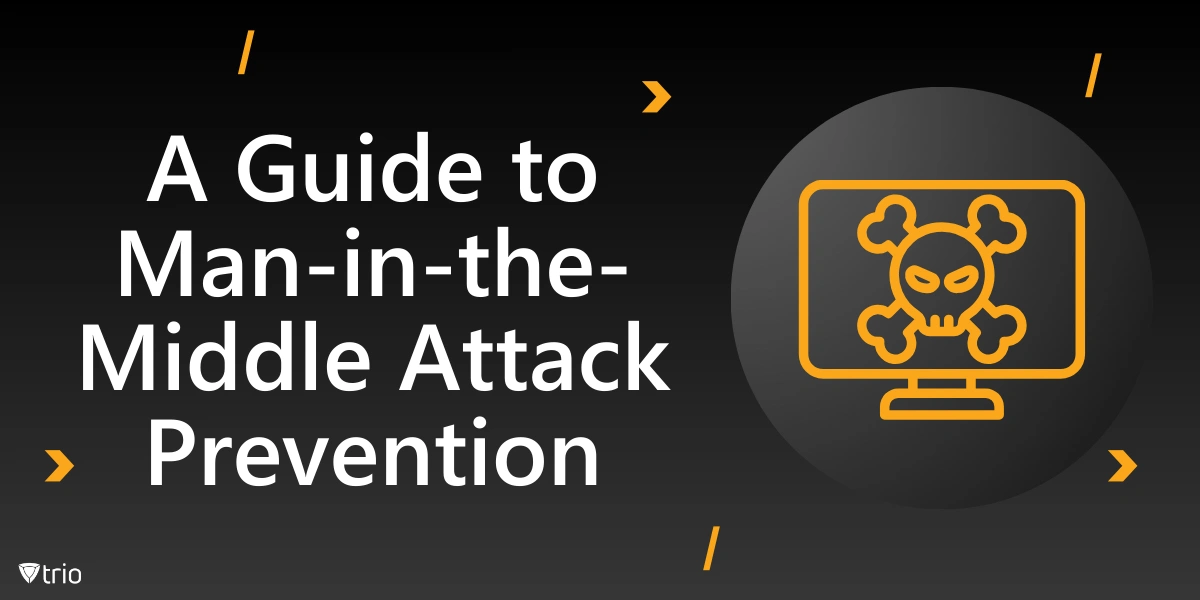A Man-in-the-Middle (MITM) attack is a cyberattack where an attacker secretly intercepts and alters communications between two parties. The goal is to gain access to sensitive data like login credentials, personal information, or financial details. With cybersecurity threats on the rise, understanding Man-in-the-Middle attack prevention is essential for individuals, businesses, and organizations. This post explores MITM attacks in detail, their impact, and the top prevention strategies to keep your data secure.
What Is a Man-in-the-Middle Attack?
A MITM attack occurs when an attacker secretly intercepts communication between two parties, such as a client and server, or two individuals, without their knowledge. These attacks can happen in various ways, including through unsecured Wi-Fi networks, malicious software, or exploiting vulnerabilities in web applications. Attacks are often executed using specialized commands and tools, generally in a controlled environment through what are called man-in-the-middle attack commands.
The key objective is to gain access to sensitive data, which can then be used for identity theft, financial fraud, or other malicious activities. MITM attacks have evolved with technology, making them harder to detect and prevent. Some common man-in-the-middle attack types include:
- IP Spoofing: The attacker impersonates a legitimate IP address to divert traffic.
- Wi-Fi Eavesdropping: Attackers set up fake Wi-Fi hotspots to intercept data transmitted over unsecured networks.
- Session Hijacking: After a user logs into a service, an attacker hijacks their session to gain unauthorized access.
- SSL Stripping: Downgrading a user’s HTTPS connection to an HTTP connection, making data more vulnerable.
Impact of MITM Attacks
The consequences of MITM attacks can be severe, affecting both individuals and businesses. Here are a few significant impacts of famous man-in-the-middle attacks such as the attack against Office 365 or the attack against Reddit in 2023:
- Data Theft: Attackers can access sensitive information like usernames, passwords, and credit card details.
- Financial Loss: For businesses, MITM attacks can lead to financial fraud, revenue loss, and even ransom demands.
- Loss of Privacy: Personal data may be exposed or sold, leading to identity theft.
- Damage to Brand and Reputation: For businesses, a security breach can erode customer trust and damage the company’s reputation.
- Legal and Compliance Issues: Companies may face legal consequences for failing to protect customer data, especially in regulated industries like finance or healthcare.

Top Man-in-the-Middle Attack Prevention Strategies
MITM attacks can be complex, but with robust cybersecurity practices, proper vulnerability management, and awareness, you can minimize the risk. Strategies for preventing man-in-the-middle attacks include:
1. Use Strong Encryption
Encryption transforms data into an unreadable format, ensuring that even if it’s intercepted, it can’t be understood. Encrypted communication using HTTPS is essential to prevent attackers from intercepting data during transmission. For businesses:
- Use SSL/TLS: Ensure all sensitive websites use SSL/TLS certificates to secure data transfers.
- Enforce HTTPS Connections: Make HTTPS the default connection protocol for your website, and consider using HTTP Strict Transport Security (HSTS) to prevent HTTP connections.
2. Implement Multi-Factor Authentication (MFA)
MFA adds an additional layer of security, making it harder for attackers to gain unauthorized access. Even if they intercept login credentials, the second layer, like a one-time code sent to the user’s device, can stop them from proceeding.
- Use 2FA Solutions: For sensitive accounts, require users to authenticate with at least two factors, such as a password and a code sent to their phone.
- Encourage User Awareness: Educate users about the importance of enabling MFA on their accounts, particularly for business or financial applications.
3. Secure Wi-Fi Connections
MITM attacks are common on unsecured Wi-Fi networks. Attackers can set up fake access points (APs) to intercept data on public networks. Preventing Wi-Fi-related MITM attacks includes:
- Use VPNs on Public Networks: Encourage employees and customers to use VPNs when accessing sensitive information over public Wi-Fi. VPNs encrypt internet traffic, reducing the risk of eavesdropping.
- Secure Office Wi-Fi: Ensure office Wi-Fi networks are encrypted and use strong passwords. Implement WPA3 encryption for the most secure wireless communication.
4. Conduct Regular Security Training
Employees should be aware of MITM attacks and the tactics cybercriminals use to intercept communications. Regular training helps reduce human error, which is often exploited in MITM attacks.
- Phishing Awareness: Educate employees on phishing and social engineering tactics, which are commonly used in MITM attacks.
- Simulate Attack Scenarios: Conduct exercises simulating MITM attacks to help employees recognize warning signs.
5. Utilize Network Monitoring Tools
Real-time monitoring and network analysis can detect unusual activity that might indicate an MITM attack. These tools can flag suspicious IP addresses, abnormal data transfers, and other signs of network intrusion.
- Intrusion Detection Systems (IDS): IDS can analyze network traffic for malicious activity, alerting administrators to potential threats.
- Behavioral Analytics: Advanced monitoring tools with AI can learn user behavior patterns and detect anomalies, alerting security teams to potential MITM attacks.
6. Implement DNS Security
Attackers often use DNS spoofing or cache poisoning to redirect traffic to malicious sites. DNS Security, such as DNSSEC, can help protect against these threats.
- DNSSEC: Implement DNSSEC to secure your domain name system and prevent DNS-based MITM attacks.
- Monitor DNS Traffic: Regularly review DNS traffic to detect any suspicious redirection.
7. Conduct Regular Security Audits
Frequent security assessments help identify and address vulnerabilities that attackers could exploit. Audits ensure your security measures are effective and up-to-date.
- Penetration Testing: Conduct regular penetration testing to identify potential weaknesses in your network and fix them proactively.
- Compliance Audits: For regulated industries, follow security compliance standards like HIPAA or GDPR, which require stringent data protection practices.
Implementing an MITM Prevention Policy for Businesses
Preventing MITM attacks is critical for safeguarding business assets and maintaining customer trust. Here are some steps for developing an effective policy for the prevention of man in the middle attacks:
1. Define Access Controls
Restrict access to sensitive systems based on employee roles. Ensure employees have only the permissions they need to perform their duties and enforce strict access management policies.
2. Require VPN Use for Remote Access
If your business allows remote work, require employees to use VPNs when accessing company resources from outside the network. This prevents unauthorized access over unsecured networks.
3. Regularly Update Software and Systems
Ensure all software, including web applications and network hardware, is regularly updated to address known vulnerabilities. Outdated systems are often vulnerable to MITM attacks.
4. Mandate Strong Authentication Methods
Enforce strong, unique passwords for all users and systems. Implement multi-factor authentication where possible, especially for accessing sensitive systems.
Tools for MITM Attack Prevention
Various security tools can support MITM attack prevention, adding layers of security for your network. Some useful tools include:
- VPN Services: For encrypting data over public networks.
- Firewall and IDS/IPS: To monitor and block suspicious traffic.
- SSL Certificate Management: To ensure secure communication for websites and applications.
- DNSSEC Solutions: To prevent DNS-based MITM attacks.
- MFA Solutions: For secure access to systems and accounts.
Emerging Trends in MITM Attack Prevention
Cybersecurity trends are continuously evolving, and new technologies are improving MITM attack prevention. Here are some emerging trends to be aware of:
- Zero Trust Architecture: This security model assumes that all network traffic is potentially malicious, verifying every user and device regardless of its origin.
- AI in Threat Detection: Machine learning algorithms can analyze large amounts of network data, detecting anomalies and potential MITM attacks.
- Hardware-Based Security: Using hardware tokens for two-factor authentication provides additional security against MITM attacks, especially for highly sensitive systems.
Conclusion
Man-in-the-middle attacks are a serious threat to data security, but with robust prevention strategies, you can significantly reduce the risk. Implementing strong encryption, securing Wi-Fi networks, and conducting regular training are just a few of the essential steps to prevent MITM attacks. By adopting a comprehensive, multi-layered approach, organizations can protect their communications, reduce exposure to cyber threats, and foster a safer digital environment.
Take action today and explore Trio’s solutions to secure your network and devices against cyber threats. Start a free trial and see how our Mobile Device Management solutions can enhance your cybersecurity framework!
Know about news
in your inbox
Our newsletter is the perfect way to stay informed about the latest updates,
features, and news related to our mobile device management software.
Subscribe today to stay in the know and get the most out of your mobile
devices with our MDM solution app.
Recent Posts

Erase the Risk: Protect with Zero Standing Privileges
Learn how zero standing privileges eliminate persistent access rights, enhance data security and reduce the risk of unauthorized access.

Understanding Access Control Types in Cybersecurity w/ Examples
Thorough understanding of access control types & the knowledge to make informed decisions about implementing security measures in your organization.

Cloud Data Protection: Safeguarding Information in the Cloud
Learn essential strategies for robust cloud data protection, exploring tools, best practices, and policies that safeguard sensitive information.





